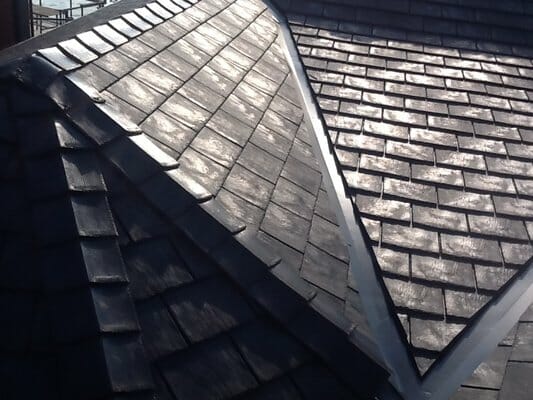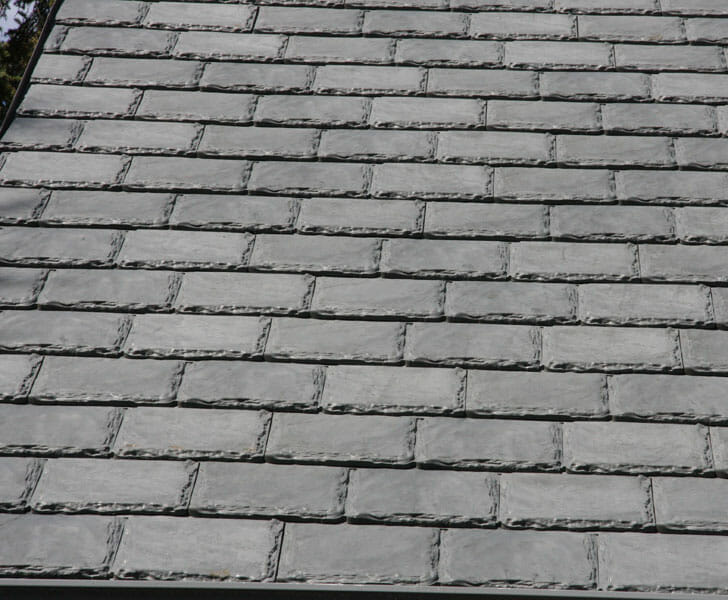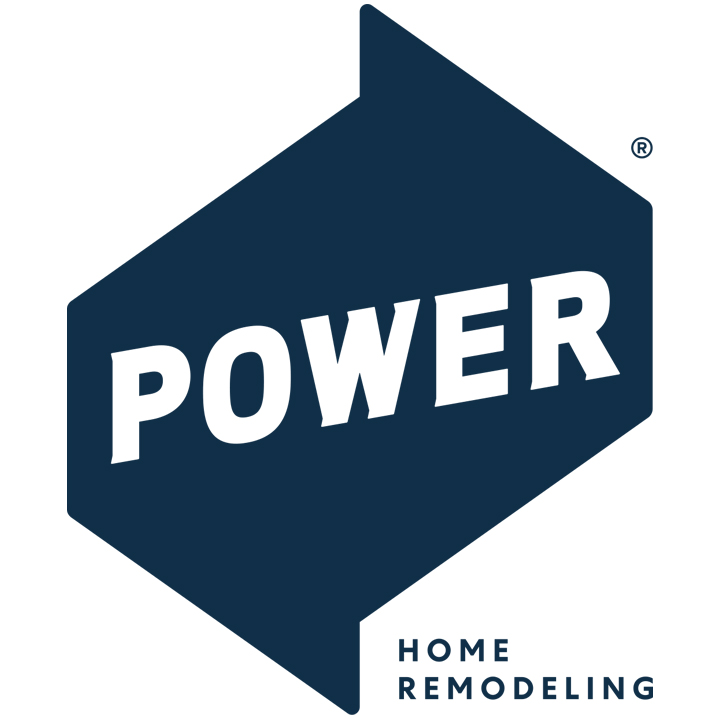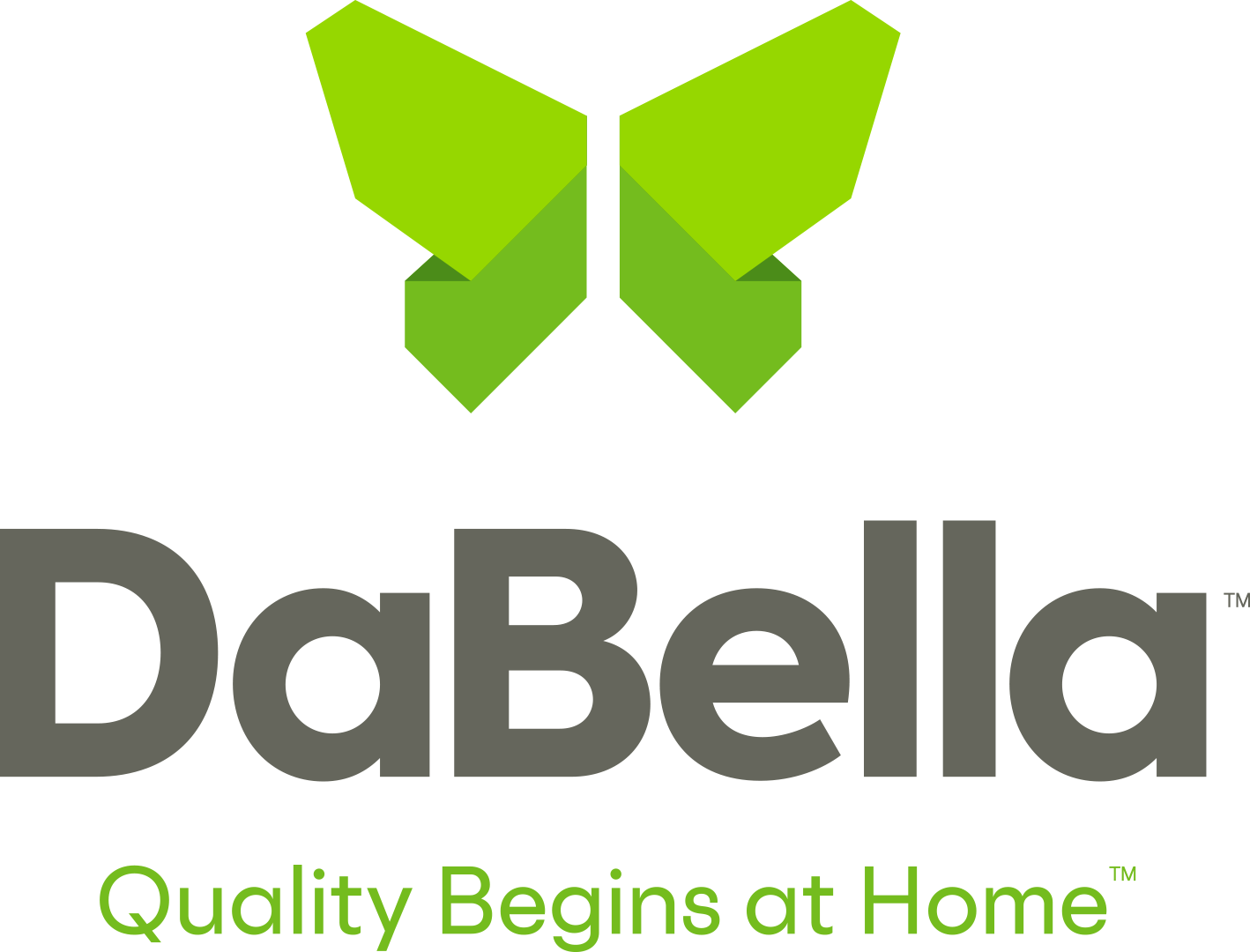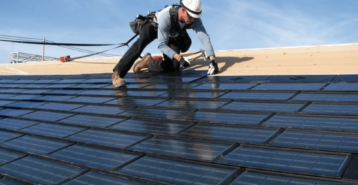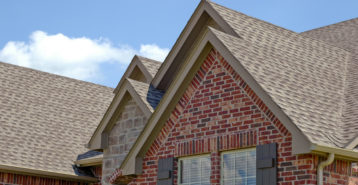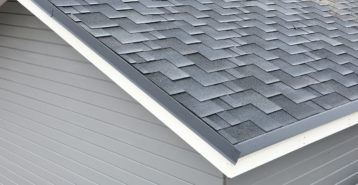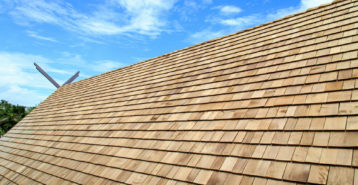Rubber Roofing Shingles
Rubber shingle roofs offer a budget-friendly option that is durable, eco-friendly, and available in a variety of colors and designs. They are generally resistant to rotting, cracking, mold, discoloration, denting, and moisture absorption–most manufacturers provide at least a thirty-year warranty. Made of affordable recycled materials, a rubber roof can also help you save on your energy bill, as rubber is well-known for its insulating capabilities.
Additionally, if your rubber roof starts to leak, it usually only requires a simple repair, a fresh application of a strong sealant or possibly the replacement of a few shingles, to get your roof back into great shape.
Combine these features with the ease of rubber roof installation, the variety of available colors and styles, and the low maintenance associated with rubber roofing, and you will find it to be a great option when it is time for you to put a new roof on your home.
- Lasts 15 – 30 years.
- Energy Efficient.
- Highly Insulating.
- Low Roof Maintenance.
- Usually a 30 year manufacturer warranty.
How Much Does Rubber Roofing Cost?
On average, you can expect rubber roofing shingles to cost $4.25 to $8.25 per square foot. Other factors that could raise the cost of your roofing replacement include: thicker roofing material, high-quality underlayment or insulation, repairs, or an extended warranty agreement.
The installation of rubber roofing is easier and quicker than other materials. The rubber is also lighter in weight, which makes it easier to deliver to your home.
Rubber roofing will most likely cost more than asphalt roofing, but less than cost of metal, slate, clay, and other premium types. Before you go with asphalt due to the low price, remember that the quality and performance is one of the highest for the price.
Rubber roofing has to be properly installed in order to offer all of the typical benefits. Keep this in mind if you are considering handling the project yourself. Though the investment may be less daunting with DIY work, you may ultimately waste money on repairs or on home damage. Protect the investment of your new roof and this project by hiring someone who knows the ins and outs of rubber roofing installation.
We suggest speaking to a local roof installer to see if a rubber roof is the best roof type to install for your home.
Energy Efficient Rubber Roofs
Rubber roofing shingles consist of up to 95% recycled materials, including recycled rubber and a number of other recycled materials, such as plastic and slate dust. Additionally, used shingles can be melted and recycled into a new product. Rubber roofing is available in a number of different colors and styles, so you don’t have to feel limited by the dark gray shade that is usually associated with rubber. In fact, if you live in a warm climate, investing in white-on-black rubber roofing (as opposed to traditional and less expensive black) can help increase energy efficiency as it is highly resistant to UV rays and absorbs heat.
Rubber Roof Maintenance
You will want to inspect your rubber shingles a few times a year, and the easiest way to do that is by keeping it clean. Cleaning your roof 3-4 times a year can also help you maintain your warranty. To clean your roof yourself, begin by sweeping or rinsing off as much loose grime as possible. Then using a spray mechanism, apply a commercial grade cleanser specific for rubber care. Use a sponge mop or a soft bristle brush to activate the cleanser. Regularly rinse your mop or brush in a bucket of clean water and use a hose to remove any remaining dirt.
Cons of Rubber Shingles
Black mold spots can develop over time on rubber roof shingles. These spots should not be a source of concern as regularly cleaning your roof will remove them. For added protection, add a coating of UV protectant. Make sure that any coatings applied to your rubber shingles do not contain petroleum distillates. Petroleum distillates will cause rubber shingles to blister and can allow water to soak into your roof’s subframe. Additionally, new rubber roofs can have a strong odor, which takes time to dissipate. A minor nuisance to most, this can be quite problematic for people with respiratory problems.
Compare top-rated roofing pros in your area.
Read real homeowner reviews, explore qualifications, and view promotions. Modernize makes it easy to browse professionals and find one that will be perfect for your project.
